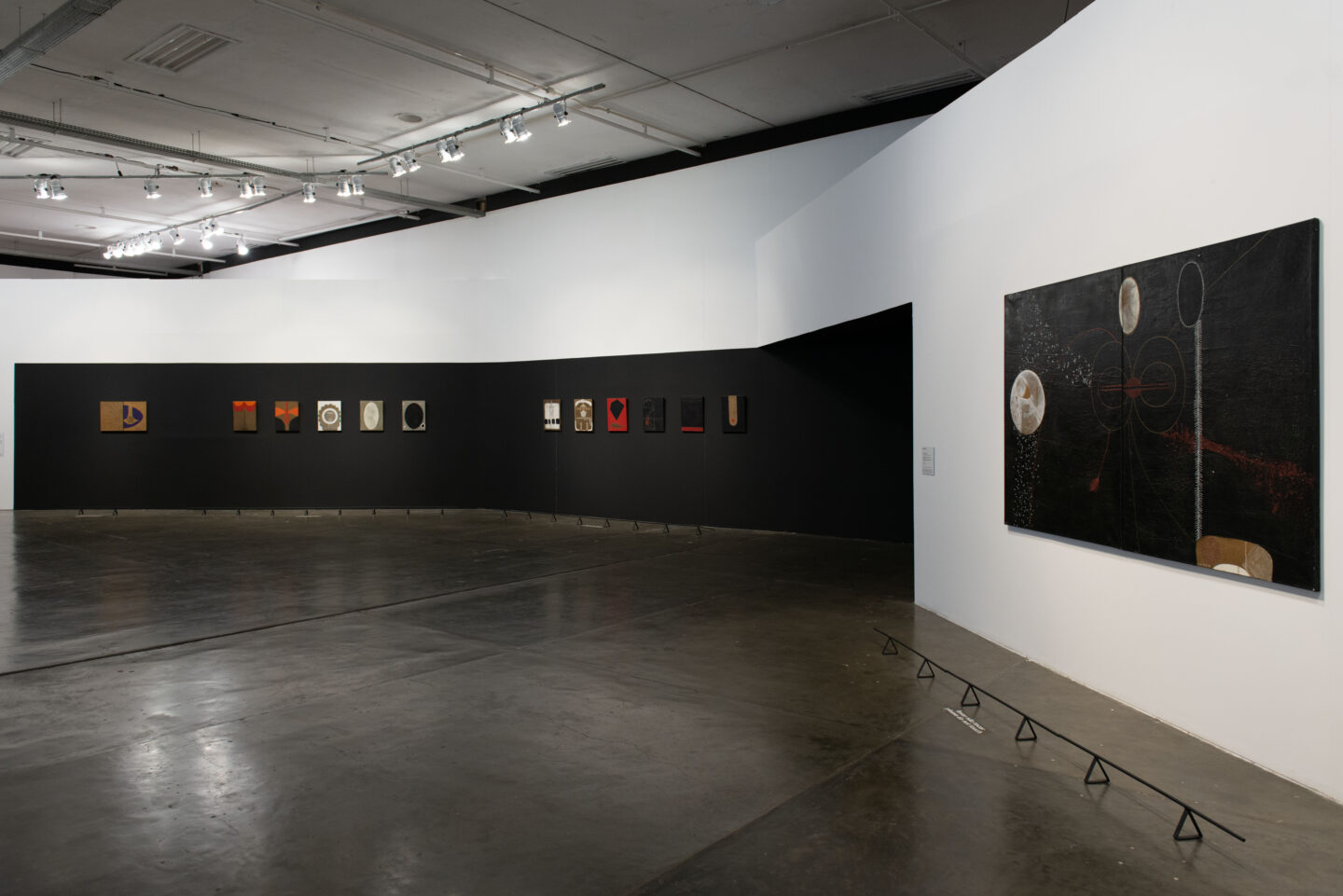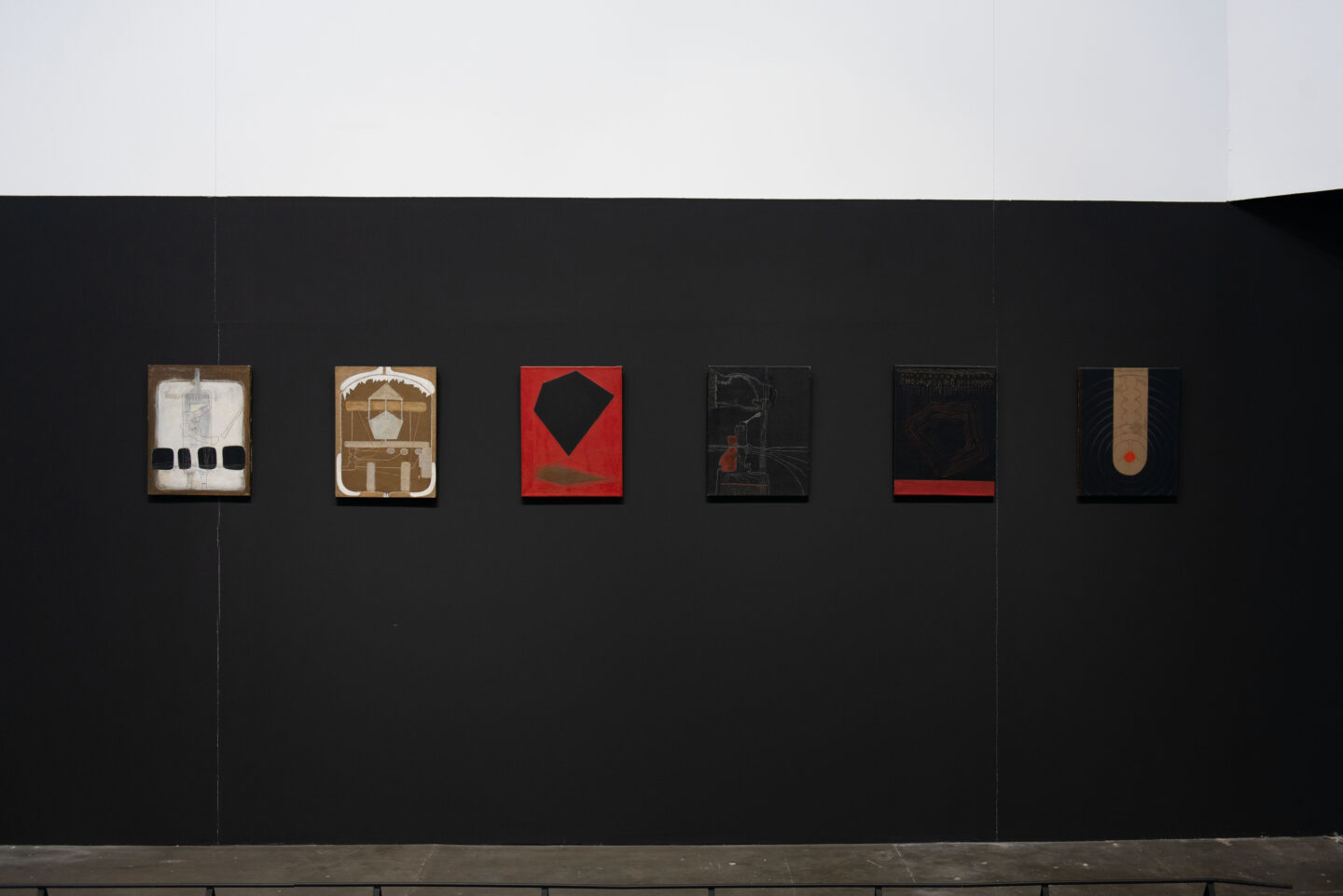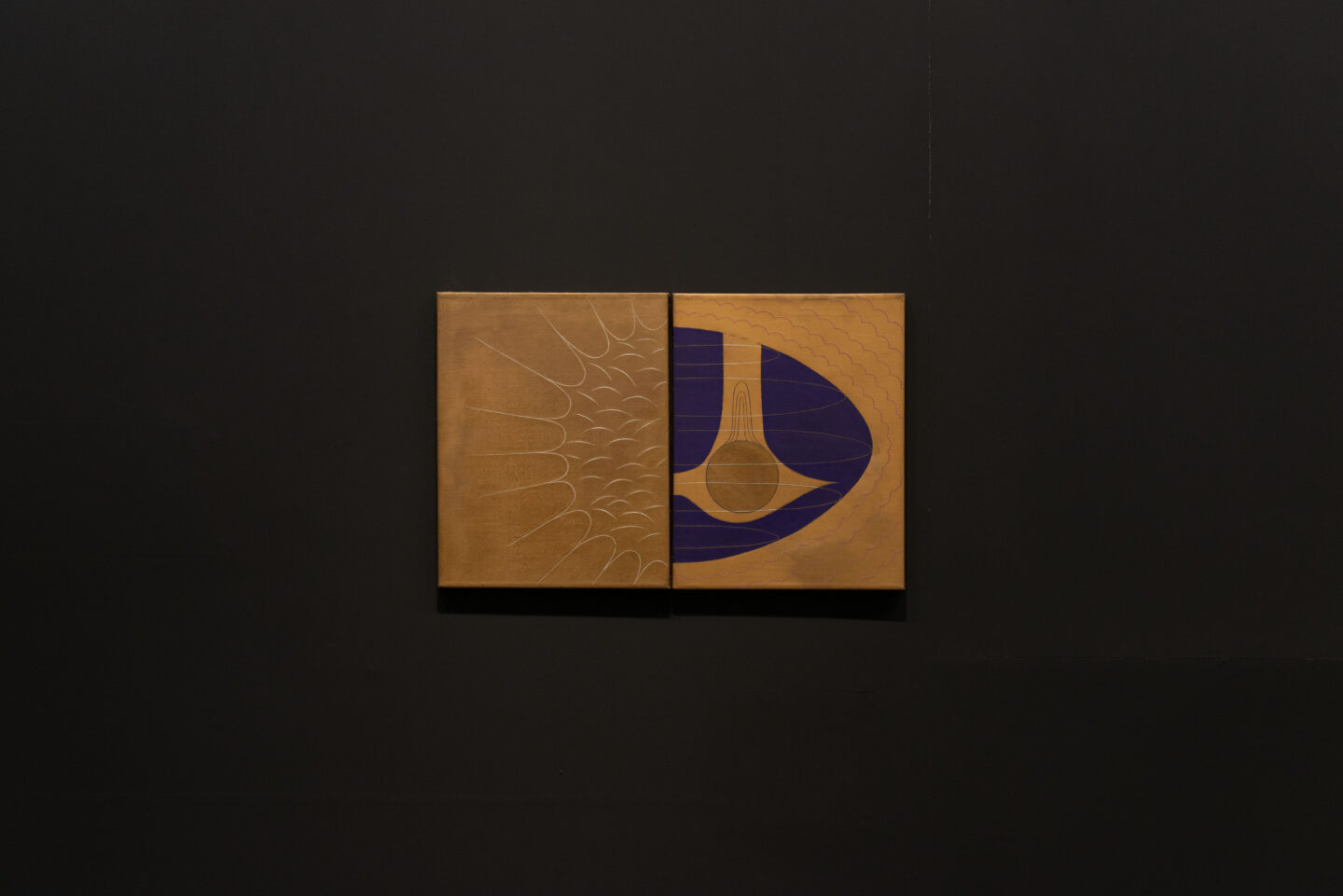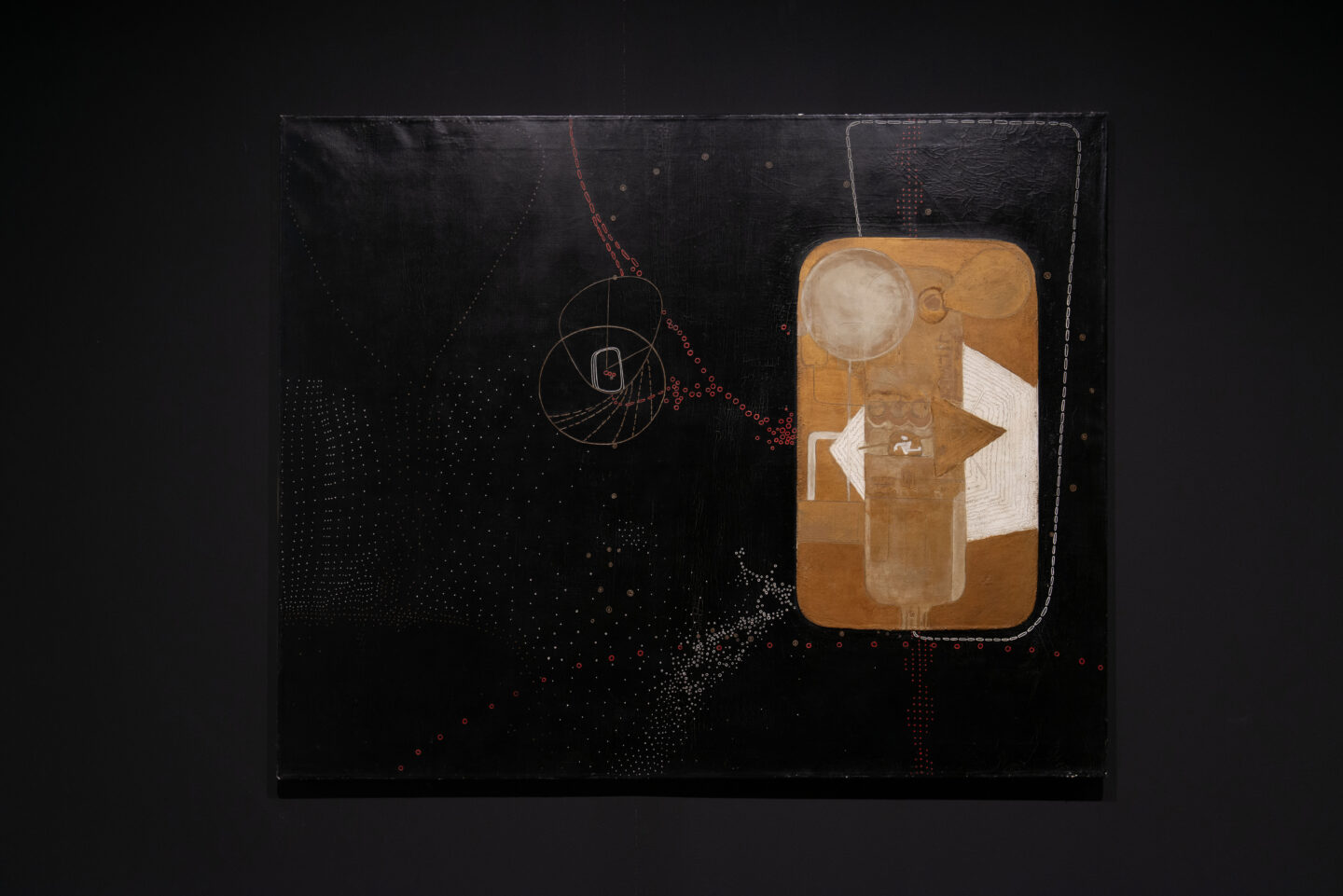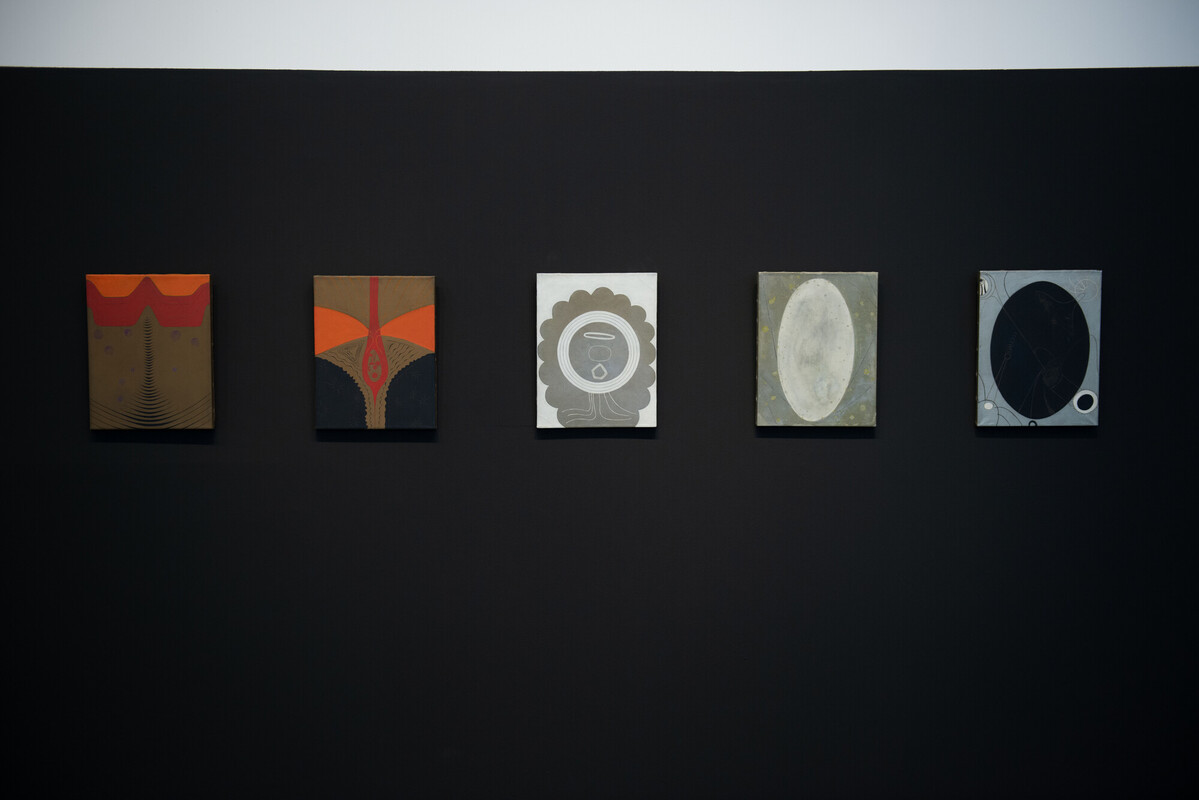
Elda Cerrato
What are these strange shapes that vibrate, approach, assemble? Mutating mother cells? Fragments of celestial bodies? Instants of unknown life? Organic machines? Domestic or stellar landscapes?
There seems to be no figuration or abstraction in the series of paintings that Elda Cerrato (1930–-2023) created after the birth of her son in 1964, and which inspired the animated short film RF: Segmentos_CPV: Okidanokh (1964–2022) – made together with Ramiro Larraín, Luis Zubillaga, and Luciano Zubillaga. In fact, there is a rigorous invention of worlds. From her earliest works, she wonders about the mystery of life and the transformation of energy into the most unsuspected, unknown. and secret forms. To some extent, those images function as explorations or hypotheses, speculations or hallucinations, and esoteric projections.
What if we managed to link together some clues that the artist leaves within our reach to work out her enigma? The titles provide clues (mentions of the Beta Being, the Laboratory of the Holy Source of Energy, Okidanokh) by referring to alternative worldviews such as the philosophy of the Fourth Way, founded by Georges Gurdjieff, of which both Elda Cerrato and her lifelong partner, the experimental musician Luis Zubillaga, were active practitioners since the 1950s.
In addition to a spiritual quest materialized in images, we can note a precise knowledge of biochemistry (she studied the whole career) and a practice of observation under the microscope.
One should also address many of these images on an erotic note: imminent insertions between organs, encounters, fusion, assembly, penetration, gestation. Flowing blood. Organs that beat.
These images can be understood as maps and diagrams of a stellar journey until landing on Earth, more precisely in a Latin America shaken by the political radicalization that ravaged the continent, where she places the series of paintings and heliographs she produced in the 1970s. From the Beta Being to the multitude in the streets: this is the transition that transfigures her gaze from an inner search to the world around her. The organicity of her maps is that of a living body, which changes without abandoning the traces already traveled, but taking them up again. “Worldviews as memories of other times”, says Cerrato.¹ An exercise in memory and at the same time a projection to the future.
Her tenacious desire to not accept conventions and to learn by her own means is perhaps the main key to approaching a trajectory that lights up from the boundaries, her “being on the edges” concerning institutions or hegemonic artistic trends. It is this capacity to decenter and interweave that encourages us to continue searching for ways to work out the enigma that she bequeathed to us.
ana longoni
translated from Spanish by ana laura borro
Elda Cerrato (Asti, Italy, 1930 – Buenos Aires, Argentina, 2023) was an artist, professor, and researcher. She participated in 150 collective exhibitions around the world with paintings, drawings, installations, performances, and films. She held thirty individual exhibitions in spaces such as the Museo de Bellas Artes de Caracas (Venezuela), Museo de las Américas (San Juan, Puerto Rico), and Museo de Arte Moderno de Buenos Aires (Argentina). Her work is featured in the collection of the Museo Reina Sofía (Madrid, Spain).
1. Elda Cerrato, La memoria en los bordes: entrevista, dibujos. Buenos Aires: Nobuko, 2011, p. 7.
- Vista de obras de Elda Cerrato durante a 35ª Bienal de São Paulo – coreografias do impossível © Levi Fanan / Fundação Bienal de São Paulo
- Vista de obras de Elda Cerrato durante a 35ª Bienal de São Paulo – coreografias do impossível © Levi Fanan / Fundação Bienal de São Paulo
- Vista de obra da série Producción de Energía [Produção de energia], de Elda Cerrato durante a 35ª Bienal de São Paulo – coreografias do impossível © Levi Fanan / Fundação Bienal de São Paulo
- Vista de obra da série Ser Beta no aislado (Iniciación del viaje) [Ser Beta não isolado (início da jornada)], de Elda Cerrato durante a 35ª Bienal de São Paulo – coreografias do impossível © Levi Fanan / Fundação Bienal de São Paulo
- Vista de obra da série Producción de Energía [Produção de energia], de Elda Cerrato durante a 35ª Bienal de São Paulo – coreografias do impossível © Levi Fanan / Fundação Bienal de São Paulo
- Vista de obras de Elda Cerrato durante a 35ª Bienal de São Paulo. 04/12/2023 © Levi Fanan / Fundação Bienal de São Paulo
- Vista de obras de Elda Cerrato durante a 35ª Bienal de São Paulo – coreografias do impossível © Levi Fanan / Fundação Bienal de São Paulo

 Português
Português